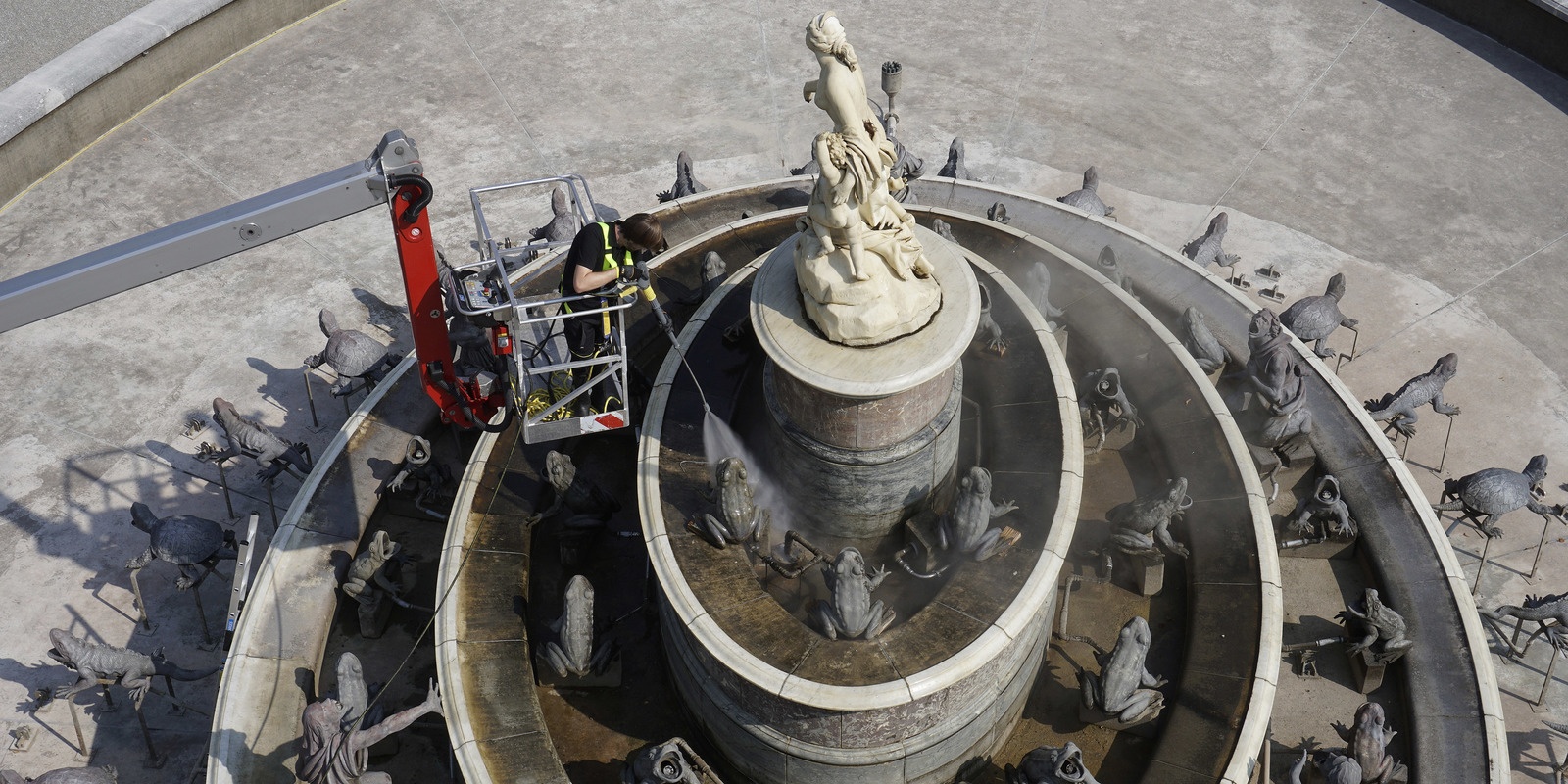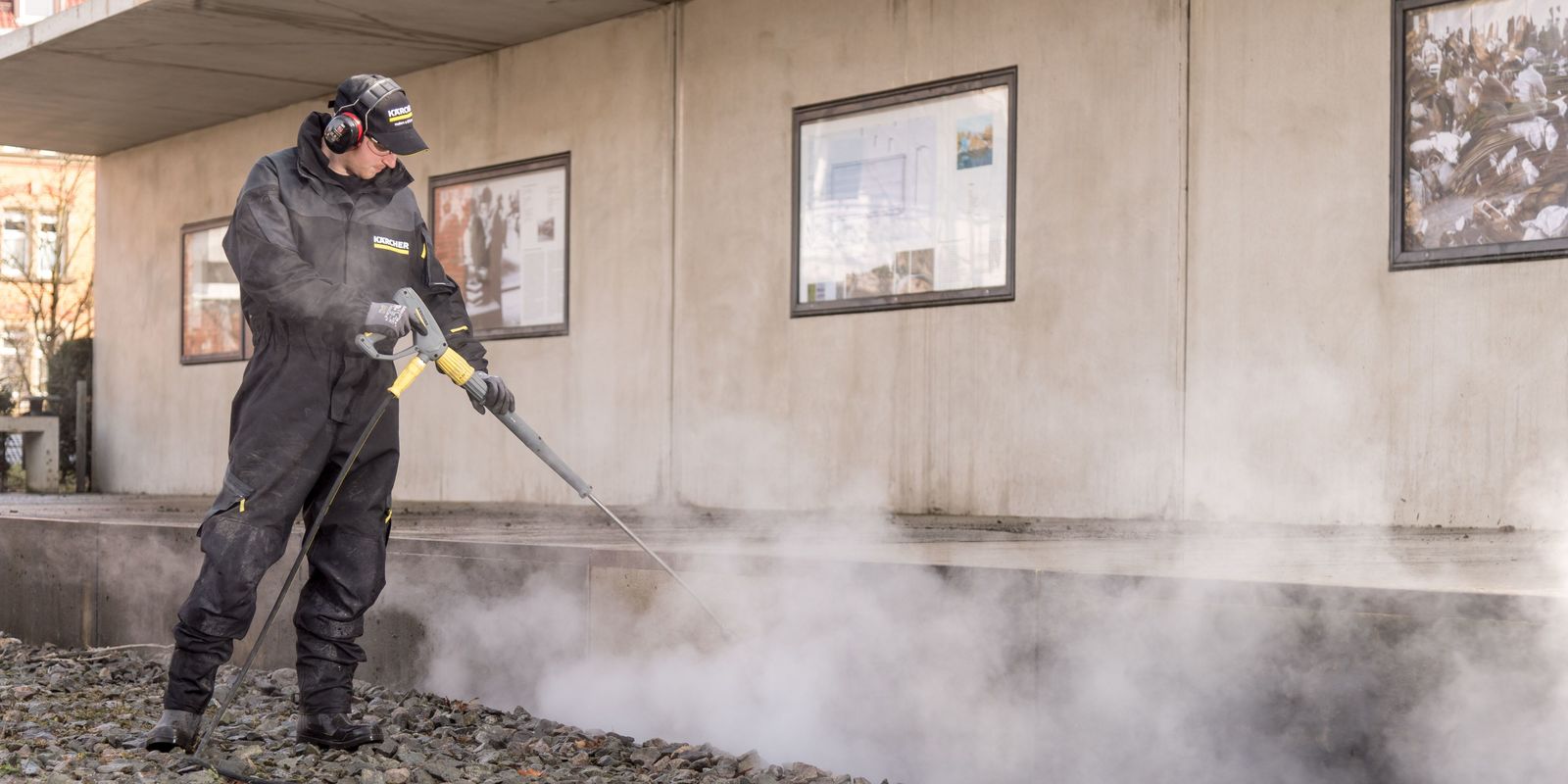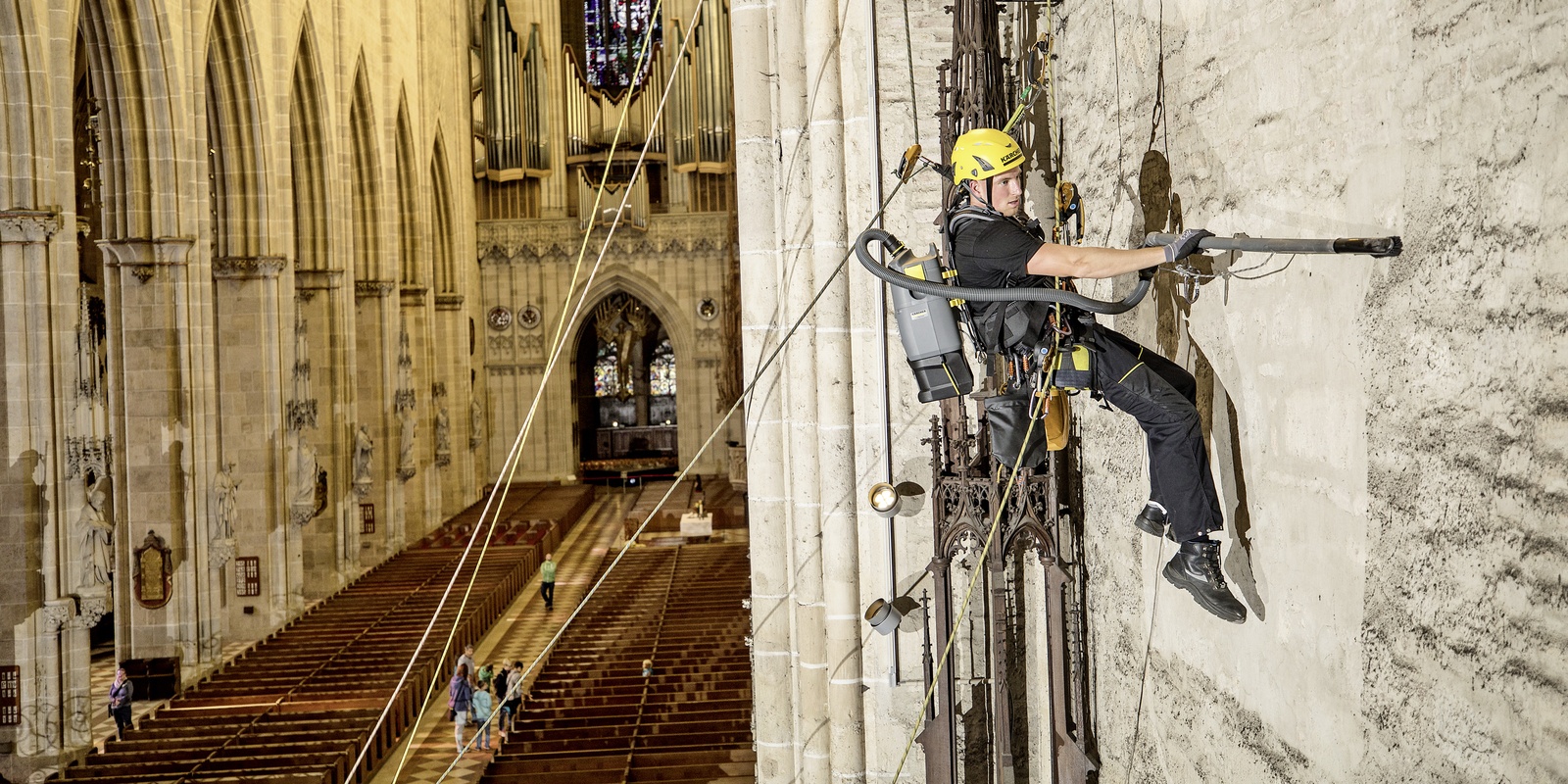Cleaning work on Würzburg's Franconia Fountain
Kärcher freed the bronze figures and limestone elements from layers of limescale and organic growth.

To remove the layers of limescale, cold water high-pressure of up to 500 bar was used.

The bronze figures of the fountain were successfully freed from layers of limescale.

The organic growth on the limestone elements was also removed successfully.
Cleaning is part of the fountain's restoration
As part of its cultural sponsorship, Kärcher has cleaned a large part of the Franconia Fountain at the Würzburg Residence. Over the decades, the hard Würzburg water had left layers of limescale millimetres thick on the figures, making it virtually impossible to see at first glance that they are made from bronze. In addition, biogenic growth had settled on the limestone elements. The cleaning operation was completed ahead of the restoration of the fountain, which will continue through to 2020.
The cleaning work was planned and carried out in close cooperation with the Restoration Centre of the Bavarian Administration of State-Owned Palaces, Gardens and Lakes. To remove the layers of limescale, Kärcher cleaning expert Nick Heyden used cold water high-pressure of up to 500 bar. "The preliminary detailed investigations and tests showed that we can work very gently on metal surfaces with this method, despite the pressure," says Heyden. This enabled a large part of the limescale to be removed. Previously, this technique had successfully been used on the Palace Fountain in Stuttgart.
To remove the biogenic growth, Heyden worked with a hot water high-pressure cleaner in gentle steam mode with a surface pressure of 0.5 to 1 bar and a temperature of up to 100°C. This type of cleaning allows moss and lichen to be removed without high pressure or chemicals. It also delays the growth of new vegetation, as the steam's high temperature disrupts the deeper-seated spores.
The next steps
"Before the cleaning, it was impossible to identify the bronze figures. We are now able to inspect them in more detail and work out how we can maintain the protective patina," explains Hannah Holland, metal restorer at the Restoration Centre of the Bavarian Administration. Various techniques are conceivable here. The use of chemicals would be irreversible, which means that coloured waxes will probably be used. "Wax can be renewed regularly and protects the bronze’s patina from new limescale formation. Coloured waxes also allow us to retouch, like in picture restoration, until the required result is achieved," says the restorer.
Würzburg's Franconia Fountain
The fountain was a gift to Luitpold, Prince Regent of Bavaria, on the occasion of his 70th birthday. It was known as the "love monument of the whole Frankish people" and as the "Monumentum Franconiae". The Residenzplatz was chosen as the site of the monument, placing it right next to the Prince Regent's birthplace. The entire work, including the bronze figures, was designed by Ferdinand Freiherr von Miller. The fountain was unveiled on 3 June 1894.

Facts at a glance
Country: Germany
City: Würzburg
Soiling: limescale and organic growth
Cleaning technology: cold water high-pressure of up to 500 bar and gentle steam mode with a surface pressure of 0.5 to 1 bar and a temperature of up to 100°C.
Execution: May 2019




